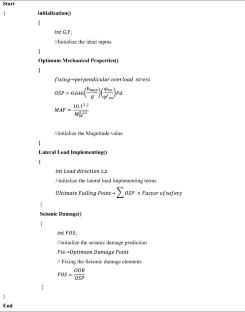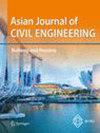Predictive optimized model for seismic damage in reinforcement girder bridge
Abstract
This study aims to develop an innovative Zebra Regression Prediction Rule (ZRPR) for evaluating seismic damage in reinforced girder bridges subjected to lateral seismic loads under three-directional conditions. This investigation evaluates the reinforced concrete Girder Bridge exposed to seismic loads in three different formats. Using an advanced technique, the model for dependability evaluation on the bridge is carried out using ANSYS software. The model is analyzed using the Zebra Regression Prediction Rule (ZRPR), which is the suggested approach. It is an innovative technique used in seismic analysis to determine the probable damage to the structural components. The seismic load is applied in three different manners: lateral oscillating loads from both directions and lateral oscillating loads in individual directions separately. The behavior pattern of the bridge is also studied. The linear inlet in peak ground acceleration is employed by implementing the oscillations in the reinforced girder bridge structure in accordance with the ordinary elemental earthquake viability evaluation. The results indicate that while the bridge undergoes lateral seismic forces on both sides, damage begins to occur when the peak ground acceleration reaches 1.5 m/s2, and the center midspan is the location where the damage first appears. When the lateral seismic load is perpendicular to the bridge’s length, damage begins at a ground-peak acceleration of 1.7 m/s2.


 求助内容:
求助内容: 应助结果提醒方式:
应助结果提醒方式:


